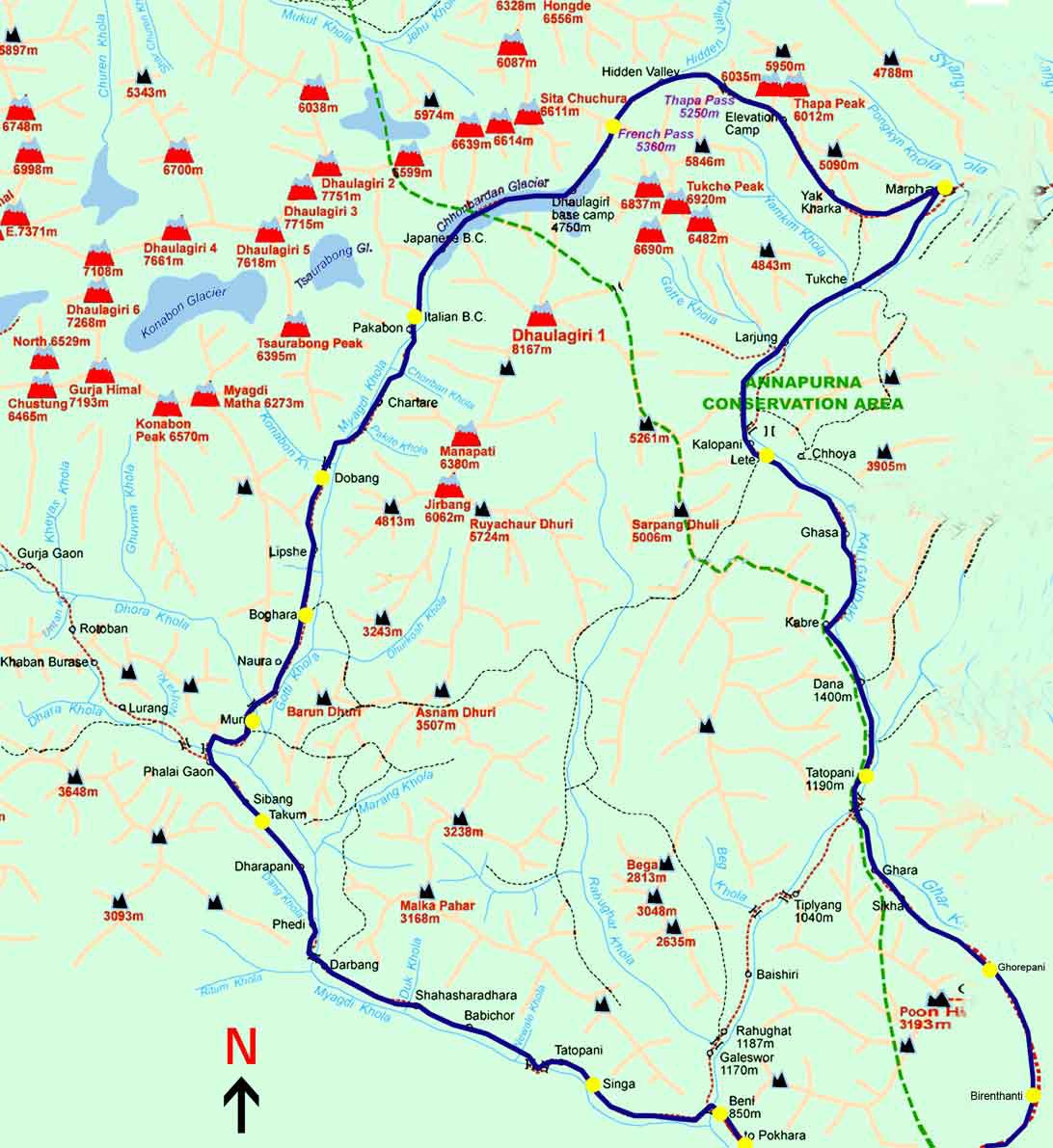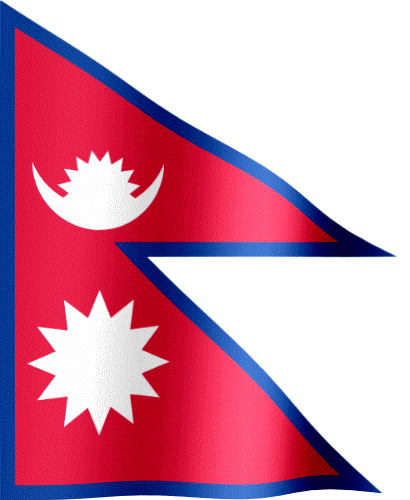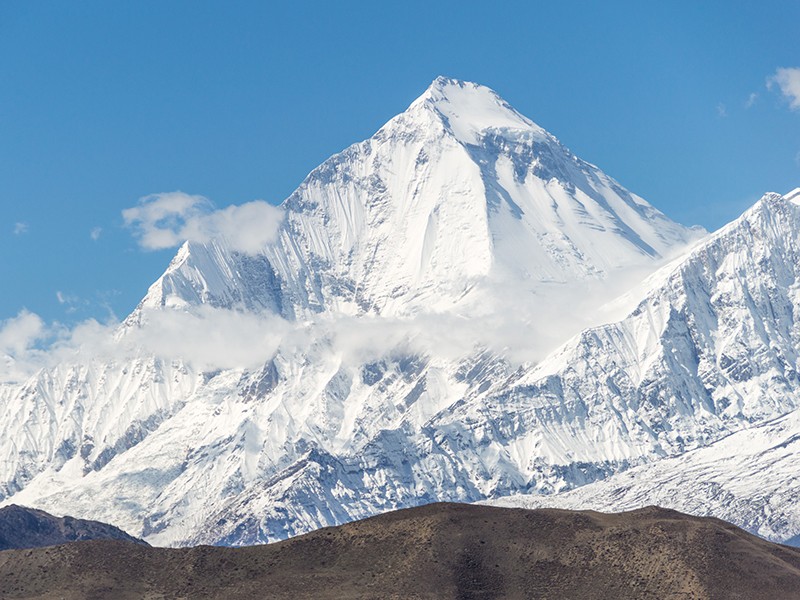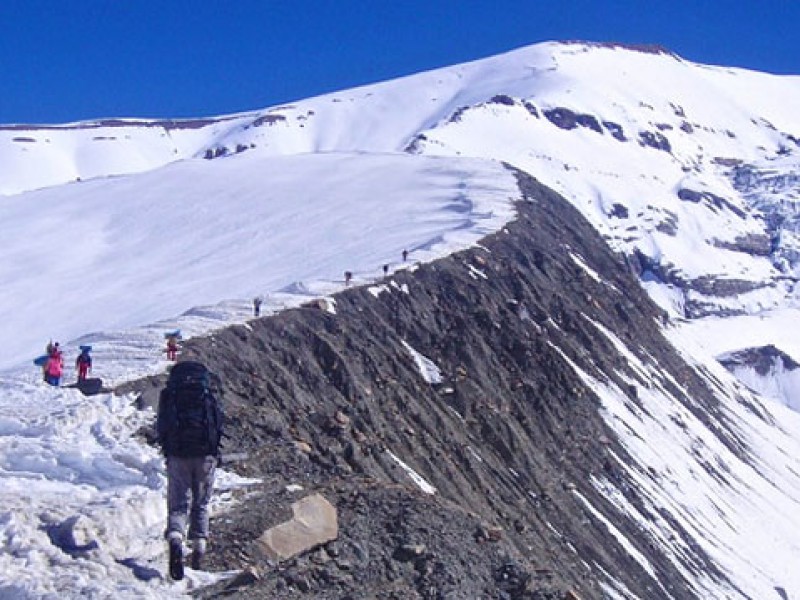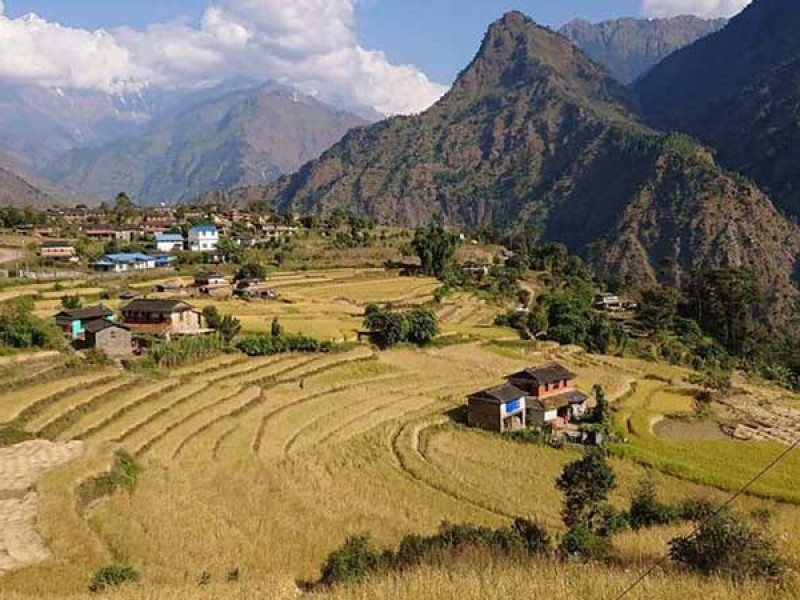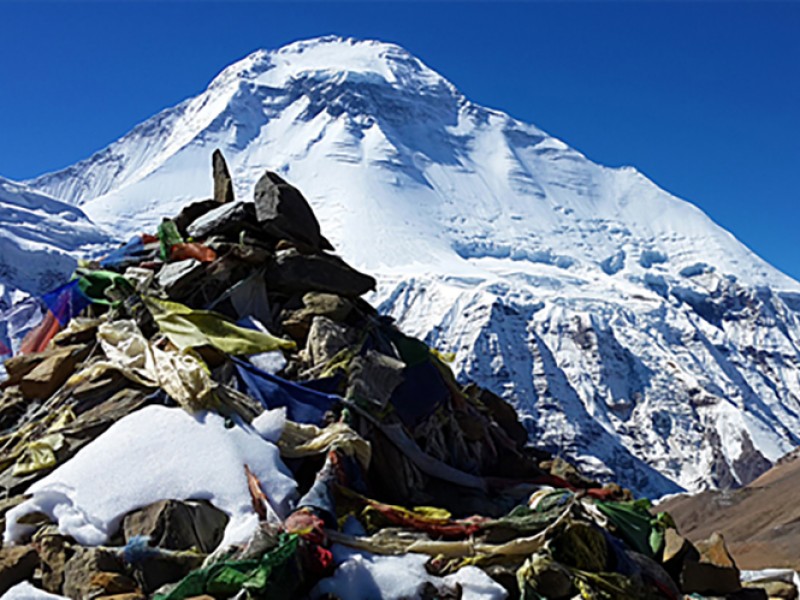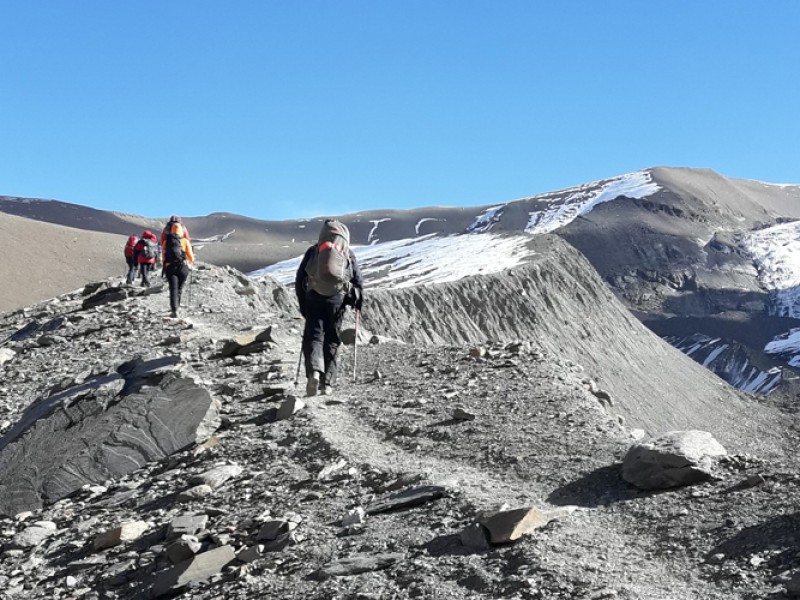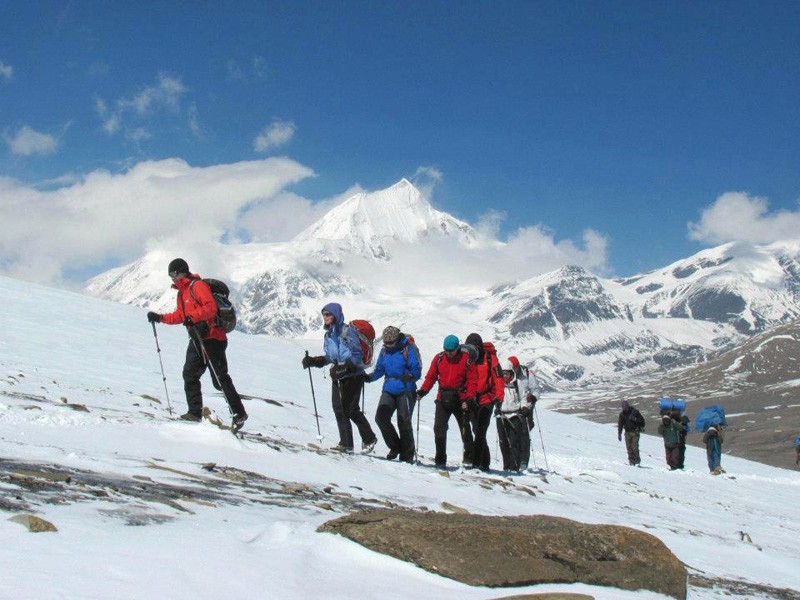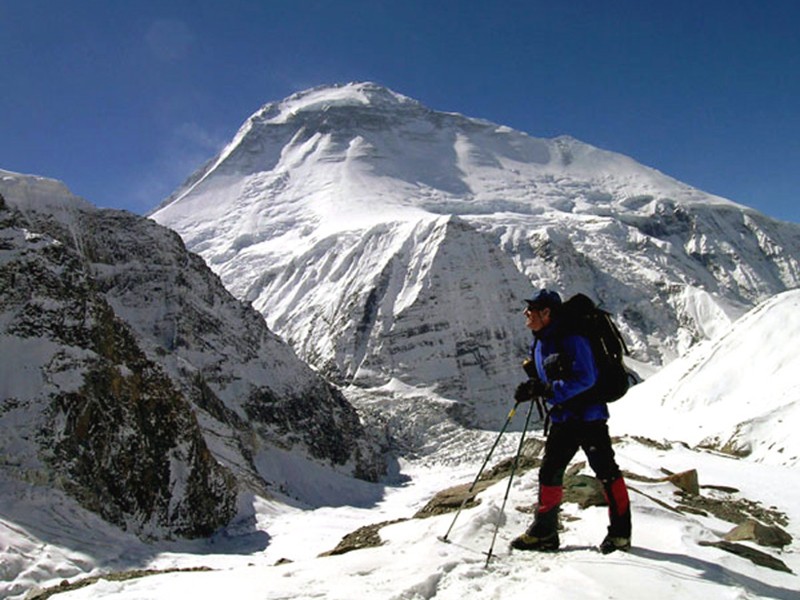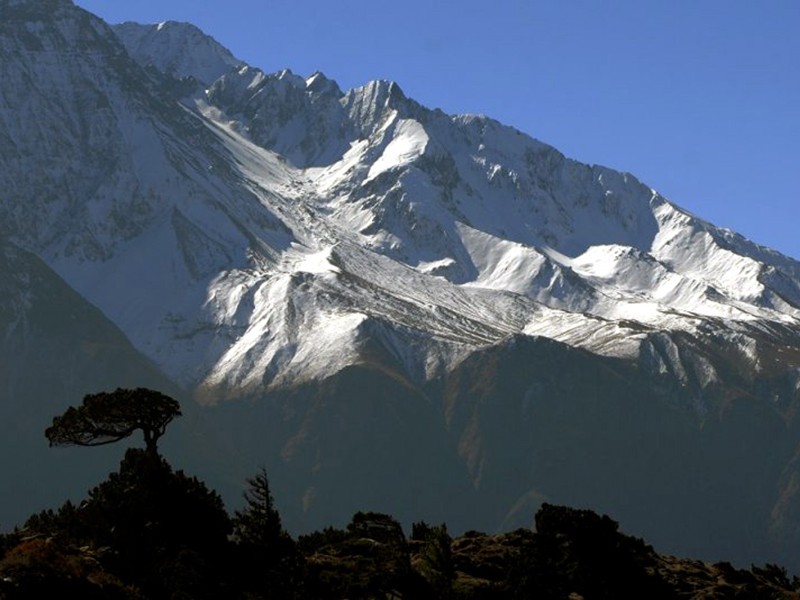Reference Code: RDTNP
Maximum Altitude: 5250m.
Season: Spring and Autumn
Accommodation: Camp
Destination: Nepal
Physical Rating: Strenuous
Group Size: 2-12
Theme: Trekking
Dhaulagiri Round is a tough trek around 3 weeks. Starting from Pokhara - a verdant valley amidst cultivated fields, and passes through the rhododendron and alpine forests and meadows with high passes, hot spring, waterfall, and plenty of stunning scenery. This trek avoids the main trail and therefore is quite strenuous and demanding. The massive peak of Dhaulagiri (8167m) is very attractive. It is one of the eight highest peaks in the world.
Between the procession of high peaks. Dhaulagiri (8,172m) is the seventh highest peak in the world. It's a long difficult trek around Dhaulagiri - following Marsyangdi Khola westwards to Darbang then turning north on a tiny trail leading through forests into the high country. Much of the route covers snow and glacier as it crosses French Col. (5,240m) and Dhampus pass (5,155m). Starting from Beni to the Kali Gandaki valley, the trek crosses high passes and rivers of Kali Gandaki and Bheri stands Dhaulagiri Himal, a massive ridge with a continues to Marpha and by passing the best panorama view of Annapurna and other many more mountains to Birethanti.
This mountain range is has 14 peaks rising over 7000m in height, including Mount Dhauligiri, the seventh highest mountain in the world, at 8172m. It is, undoubtedly, a memorable place for adventure seekers all over the world. The incredible views of Ice Falls and Glaciers make this trip worthy enough for those who have only dreamt of such an adventure. There are a few routes to choose from, each offering spectacular views of the majestic Himalayan landscape. Experienced trekkers with basic mountaineering skills will enjoy this region.
Day 01 Arrival in Kathmandu (1350m.)
Namaste! And welcome to Kathmandu, the colourful capital of Nepal where ornately carved balconies mingle with beautiful shrines and temples. Your adventure begins with a welcome meeting on arrival at the exit gate of Kathmandu airport. Our staff will welcome you and pick you to your accommodated hotel. Please seek our company palmplate to find our staff at the main exit gate of the airport. Rest of the day you can relax at the hotel or short evening walk around local market on your own as per your wish.
Day 02 Rest and preparation day
A well deserved rest day at cosy of hotel after a long tiring flight. This day, one can move around nearby local market to purchase or hire trekking equipment that is necessary for the trekking like sleeping bags, walking sticks etc, exchange currency as requirement or simply walk around in the local market or Kathmandu Durbar squire nearby with small entrance fee as per your preference on your own. Evening at the hotel lobby there will be pre-trip briefing in which you will be introduced with your trekking guide and explained about your trip in short, instruction for safety etc.
Day 03 Drive to Pokhara(820m.)
Leaving Kathmandu behind early this morning, journey to the enchanting Nepalese town of Pokhara by private vehicle (approximately 7 hours). Pokhara enjoys a delightful setting on a lake beneath the snow-capped peaks of the Annapurna range, making it an excellent place to relax and contemplate what lies ahead. Pokhara is part of a once vibrant trade route extending between India and Tibet. This is the land of Magars and Gurungs – hardworking farmers and valorous warriors who have earned world-wide fame as Gurkha soldiers. The Thakalis, another important ethnic group here, are known for their entrepreneurship. This afternoon you’ll have your trek briefing and preparation, but depending on your arrival time, there may be time to hire a small boat for a quick paddle on the lake. There are also plenty of cafes where you can put your feet up and enjoy international cuisine, while the main street is full of shops and stalls selling a wide range of Nepali and Tibetan souvenirs. If you need to hire some extra trekking gear, then there are numerous shops available offering everything you could possibly need.
Day 04 Drive to Beni and to Darbang (1180m.)
We drive from Pokhara via Baaglung to Beni, which will take around 4 hours. From Beni we change to a local vehicle for around 2½ hours (depending on the condition of the surface) of off road driving to Darbang
Day 05 Trek to Sibang(1610m.)
From Darbang we cross the Myagdi Khola River. This initial part of the trek is prone to landslips, so we may find that we encounter some rough diversions. Our route heads steeply uphill before the path becomes easier as it approaches Dharapani. From here the mountains of Putali and Ghurja which are part of the Dhaulagiri massif are visible. Our overnight will be at Sibang.
Day 06 Trek to Mudi(2080m.)
From Sibang the path follows above the river before descending for about 2 hours to the point where the Myagdi Khola meets the Dar Khola. Ascending for another 2 hours on the other side of the Dar Khola, we go to Mudi and from where we can enjoy magnificent views of Dhaulagiri (8167m) and Manapati (6380m).
Day 07 Trek to Bagar(2080m.)
Dropping back downhill again, this time to the Muri Khola, we climb up through forest over a ridge. At a junction there is a fork in the path. The lower path is shorter by about 2 hours, but does involve a steep, exposed section which has some rope handrails on the more exposed sections. After this, the path becomes less technically difficult, but ascends steeply to Bagar. This is the final village on our trek before we reach the Kali Gandaki Valley on the other side of the French Pass.
Day 08 Trek to Doban(2500m.)
Beyond Bagar the path undulates through forest, which has slippy, wet sections and another steep technical section. We may see monkeys and honey collectors in the forest. Before. We will lunch in the forest en-route, and then continue to finally reach the forest clearing that is Doban, dominated by Kambon (6570m) and Dhaulagiri IV (7661m).
Day 09 Trek to Chaur Bag Khola(3445m.)
Our journey today continues through forest, and takes us soon across the Kunaban Khola, before continuing to follow the Myagdi Khola towards a wooden bridge that we cross before ascending to overnight at Chaur Bag Khola Camp.
Day 10 Trek to Japanese Camp(3890m.)
The valley widens and we continue on the right bank of the Chauiban Khola though rhodedendron forest and then moraine to the Italian Base Camp at 3660m, where the valley narrows again. The route can be difficult through the moraine, and we may fix a rope to help with the passage for ourselves and the porters. Extra care may be need if the area is affected by snow or ice. We then pass through the Swiss and French Base Camps before ascending to our camp at the Japanese Camp. From here, Dhaulagiri I and Tsaurabong Peak (6395m) and their glaciers dominate our view.
Day 11 Acclimatization day
This is the first of 2 essential days for acclimatisation during this trek. A walk to gain some height, and then returning to the same altitude for a second night at the same altitude will put us in good stead for the next altitude gain to Dhaualgiri Base Camp.
Day 12 Trek to Dhaulagiri Base Camp(4700m.)
A tough day of walking over the morain of the Chhonbardan Glacier. Dhualagiri I (8172m), II (7751mm), III (7715m) and V (7618m) are all visible from our camp, as is the icefall which is between Dhaulagiri and Tukuche Peak (6920m).
Day 13 Acclimatisation day
Our second acclimatisation day will help us to prepare for the ascent of the French Pass.
Day 14 Trek via French Pass(5360m.) to our camp above the Hidden Valley(5050m.)
We cross the moraine and climb up above the Chhondarban Glacier. As we follow the ablation valley on the approach the French Pass, the snow slopes are not technically difficult. The Pass is usually reached around 4-5 hours after leaving Dhaulagiri Base Camp. From the pass we can see Tashi Kang, Tukuche Peak, the Mukut Himal mountains and of course, Dhaulagiri I. The descent is gentle, across snow slops to our camp in the Hidden Valley, which was only discovered a few decades ago. We need to carry plenty of water today as there won’t be opportunity to refill.
Day 15 Contingency day
We have allocated a contingency day in case of problems with the weather or acclimatisation, to be used at the leader’s discretion. It could be used to break up the descent from Dhampus Pass, staying overnight at Alu Bari on the way down, allowing more time in Marpha.
Day 16 Cross the Dhampus Pass (5244m.) and on to Yak Kharka (4900m)
We cross the Dhampus Pass, which is almost the height of the French Pass, before a long descent to Yak Kharka. Still carrying axes and crampons, we may well have to use them today. Our long descent, which is sometimes steep and rocky, is rewarded with views of the Annapurnas and Nilgiri as well as Tukuche Peak. We will also see Tilicho, Jomson and the striking semi-desert landscape towards the Mustang region.
Day 17 Trek to Jomsom(2760m.)
A big descent day, for which trekking poles are strongly recommended! We descend for around 2 hours before Dhaulagiri I reappears from a ridge viewpoint. Alubari is a seasonal settlement, and then we continue downhill steeply to Marpha. We are now ion the Annapurna Circuit, and will no doubt feel rather shell-shocked by the sight of so many trekkers and tea housees. Marpha is a beautiful unusually clean white-washed village. There are many Tibetan craft shops here, as well as apple orchards – the apples are used for the famous Marpha brandy. From here it is a short walk to Jomson, and the end of our trek where no doubt we celebrate with a well-earned local brandy.
Day 18 Fly to Pokhara(820m.)
From Jomson the mountain flight back to Kathmandu is one of the most impressive flights in the world. Following the course south of the Kali Gandaki down what is called the world’s deepest gorge, the tiny twin otters fly between the 8000m peaks of Dhaulagiri on the right, and Annapurna on the left. Returning to Pokhara, we have time to enjoy a well-earned shower and meal in one of Pokhara’s many excellent restaurants.
Day 19 Fly to Kathmandu(1350m.)
We fly back (probably in the afternoon) to Kathmandu and transferred to our group hotel. The rest of the day is free, and any time in the morning can be spent continuing to enjoy Pokhara.
Day 20 Final departure
We say 'Namaste' for memories that will last a lifetime. There are no activities planned for today and you are able to depart the hotel at any time. Check out time from the hotel is at 12 noon. If you are departing later, you can arrange luggage storage at the hotel. For your final departure, our staff will pick you up from the hotel and transfer to Kathmandu airport approximately 3 hours prior to your international flight time.
Inclusion
Camping basis
All ground transportation as per itinerary
4 night hotel accommodation in Kathmandu with B/B plan.
1 night hotel accommodation in Pokhara with B/B plan
½ day sightseeing in Kathmandu valley with English Speaking Cultural guide
TIMs (Trekking Information Management system) card
Annapurna Conservation Area Entry Fee
Domestic flight with airport tax: KTM-PKH(Optional)
Domestic flight with airport tax: JOM-PKH-KTM
Cargo charges
Food for the members on camping basis
All camping equipment and camping charges
Medical supplies(First aid Kit will be available)
All required Nepalese staffs (salary, food, clothing, accommodation)
All Nepalese staffs insurance as per Nepalese Government rules.
Company service charge, VAT and government taxes etc.
Exclusion
International flight with airport tax.
Nepalese Entry Visa fee
Food during stay in Kathmandu and Pokhara
All personal equipment and personal expenses
Photography Charges, Monument charges and Monument entry fees
Personal Medical and travel insurance(must cover helicopter rescue evacuation cost)
Personal Medicine
Telephone and internet charges
Laundry charges
Alcoholic beverage, bottled drinks and cold drinks during the trip
Rescue evacuation charges if required
Staffs and porters Tips...
Equipment List
Clothing and Equipments List
» Pack to pack out - bring enough waterproof bags to carry all non-biodegradable rubbish back down the mountain.
» Remove all unnecessary packaging before leaving home.
» Bring enough warm dry clothes so that you can wrap up rather than burn firewood in the evenings.
» If you are going to trek higher than 5000m or you know it will be cold, buy an aluminum water bottle which can also be used as a hot water bottle at night.
» The easiest way to keep hydrated while trekking is to buy a 1 x liter platypus-drinking bladder to carry in your day pack.
» Make sure to buy proper trekking socks. Don’t buy synthetic socks as these promote sweating and can give you blisters. Always carry a few blister pads in your first aid kit and keep them handy in your day pack.
» Walking poles are very useful while trekking and helpful when descending.
» Please remember that waste disposal and recycling facilitates are limited in Nepal. When buying batteries make sure they are rechargeable and/or high quality so they last longer, and take them home to recycle.
More Lists
There is no definitive list. What you bring will vary according to the area, time of year and the length of your trek. Below is a suggested check list which you should adapt to your own needs. Ask yourself: Will there be snow/how long /high is the trek/are we camping?
» Good quality trekking boots with ankle support
» Lightweight shell/raincoat with hood
» Detachable fleece liner or separate fleece
» Fleece trousers
» Shorts and / or convertibles trousers- quick drying
» Sunglasses
» Sun hat and warm hat(good quality)
» Gloves
» Spare T-shirt x 3
» Sweat towel x 2
» Spare socks x 3 ( walking sock and thin inner sock)
» Small day sack
» Sun cream
» Small water bottle aluminum doubles as a hot water bottle.
» Iodine or water purifying kit,
» Soluble vitamin tablets to taste water or powder fruit drink
» Talcum powder
» Walking sticks or Trekking poles(good quality)
» Camp shoes/trainers/flip flops to wear in evening.
» Spare underwear 3
» Toilet kit
» Tissues
» Pen knife
» Bum bag
» Head torch(good quality)
» Biodegradable washing liquid / soap
» FILM
» CAMERA
» Ear plugs
» Sleeping bag liner(good quality)
» Sleeping bag(good quality-30)
» Bin bag/ gasbag to keep kit dry
» Small towel
» Lip balm
» Available in KTM
Personal First Aid (Aids Kit)
» Antiseptic
» Bandages
» Blister plasters
» Decongestant
» AMS medication like Diamox
» Eye drops – it can get very dusty on trails
» Paracetamol and/or ibuprofen
» Rehydration sachets, Imodium and antibiotics for traveler’s diarrhea
» Scissors
» Sterile dressing
» Sticking plasters and tape
» Throat lozenges / sweets
» Tweezers
» A sewing needle etc.
This trekking equipment list has been prepared by Adventure Zambuling Treks (P) Ltd.
